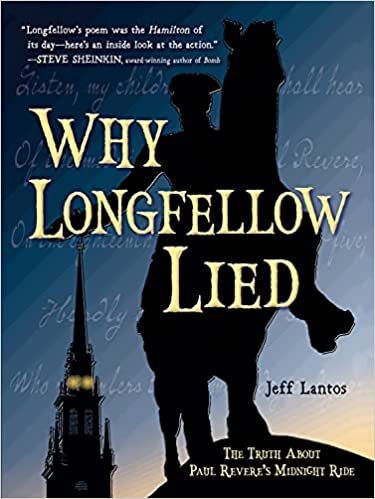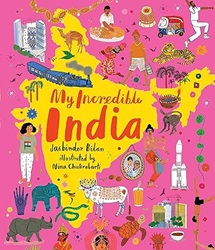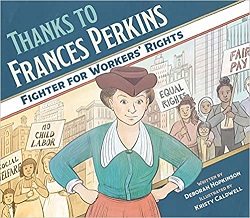Review of Why Longfellow Lied, by Jeff Lantos
The Truth About Paul Revere’s Midnight Ride
by Jeff Lantos
Charlesbridge, 2021. 134 pages.
Review written January 7, 2022, from a library book
Starred Review
My plan was to read this book a little bit at a time, but once I started, it was hard to stop! It takes Henry Wadsworth Longfellow’s famous poem, “Paul Revere’s Ride” stanza by stanza and tells us what really happened on that fateful night that the Revolutionary War began.
But Longfellow made it a poem about one hero, Paul Revere, when actually a long list of people were involved in warning the colonists. So the author also looks at the question of why Longfellow took so much poetic license? What was he trying to accomplish with this poem? (Hint: It was written just before the Civil War began.)
Now, kids today may not be familiar with the famous poem. The author takes care of that by printing it at the front of the book. And the words do have a ring to them. Then he takes the poem a little at a time and tells us what actually happened that night, from revealing the actual mastermind behind the mission to telling us about Paul Revere’s capture before he ever got to Concord.
It turns out that was a momentous and exciting night in American history. The book is filled with plenty of paintings, maps, sidebars, engravings, photographs, and other artefacts. I now have a much better understanding of April 18-19, 1775, than I ever got in History class. Super interesting and informative. And it will help kids think critically about history.
Find this review on Sonderbooks at: www.sonderbooks.com/Childrens_Nonfiction/why_longfellow_lied.html
Disclosure: I am an Amazon Affiliate, and will earn a small percentage if you order a book on Amazon after clicking through from my site.
Disclaimer: I am a professional librarian, but the views expressed are solely my own, and in no way represent the official views of my employer or of any committee or group of which I am part.
What did you think of this book?









